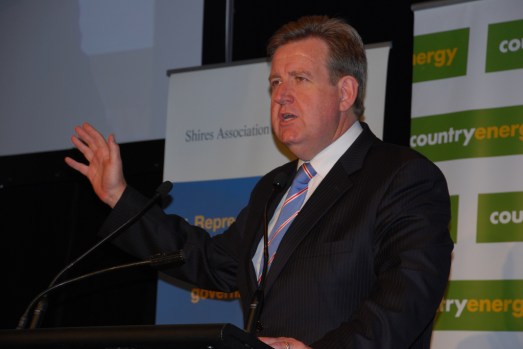Mayor David O’Loughlin
Warnings in the Victorian Parliament this week about the financial struggles facing small rural councils should trouble us all.
Municipal Association of Victoria (MAV) President Mary Lalios gave a gloomy but accurate assessment of smaller councils’ inability to deal with lower levels of Commonwealth funding and a 2 per cent cap on rate increases.
Similar concerns have arisen in my home state of South Australia, where the Liberal Opposition Party has said it will peg council rates if it wins government at the state election due next March.
NSW councils have laboured under rate capping since 1978, and last November were told by the Independent Pricing and Regulatory Tribunal (which sets the allowable rate increase) that they could increase their rates for the next financial year by no more than 1.5 per cent.
IPART said the 1.5 per cent figure was fair given low inflation and slow wage growth.
But as my colleague Local Government NSW President Keith Rhoades said at the time, IPART’s conclusions ignored the 1.8 per cent increase in CPI, the equivalent increase in employment benefits and non-residential building costs greater than 1.5 per cent. And he pointed out, rightly in my view, that the rage peg was “a financial noose which continued to tighten” around councils and local communities.
Yet surely it would be a brave observer who concluded that the Sydney market would be overly sensitive to rate rises when the same market is still growing despite the largest increase in property costs and rents in Australia in recent years. Yet there’s no sign of an IPART equivalent seeking to intervene on rents or property prices.
Consider this: Sydney councils have been rate-pegged for the longest duration in the nation, and many of them now impose the highest developer charges in the nation for new homes. The Sydney market has the longest running housing supply shortfall and, as a direct consequence, the highest average rents in the nation. Perhaps it’s just me, but in my mind, these factors are intrinsically linked.
What is wrong with Councils determining their own level of rates? After all, as the recent NSW council elections demonstrated, we are ultimately accountable to our voters, and if we get the balance wrong we risk being thrown out of office. It’s a proven mechanism – it’s called democracy.
Meanwhile, the well-intentioned but unelected IPART need never worry about facing the voters about the short and long-term impacts of rate pegging.
This week Cr Lalios told the Victorian Parliament that capital spending in small rural shires would decline by 30 per cent from 2016-20, with the three-year freeze in Financial Assistance Grants, the cancellation of the Country Roads and Bridges Program in 2105, and the two per cent rate cap contributing substantially to that reduction.
The immediate consequences of rate capping, particularly for councils with limited access to other revenue like parking fees, fines and charges, are an increase in debt levels, a drop in service levels, or a combination of both.
Over the longer term, however, that’s unsustainable. The Commonwealth’s “efficiency dividends’’ show year-on-year budget cuts imposed on departments and agencies inevitably lead to reduced or cancelled public services. Why would Local Government be any different?
Councils have the narrowest revenue base of the three levels of government, yet the heaviest roads and infrastructure burden. Rate caps are the financial equivalent of a ball and chain. And it is ratepayers and local businesses who are hit hardest by truncated services, deteriorating infrastructure, and a lack of capacity to innovate and respond to emerging community needs.
Councils are already attempting to offset the double whammy of rate caps and lower Commonwealth funding by using collaborative procurement, improved asset management, and by developing cost-sharing partnerships and other options – but this may not be enough to change the fundamentals.
As I advocate for a return to sustainable federal funding, I am drawing a clear link to the call for an end to rates caps in favour of local decision-making. I make it clear that for every dollar councils are unable to raise locally, they will be looking for it elsewhere – with the Commonwealth a primary target.
Mayor David O’Loughlin is the president of the Australian Local Government Association (ALGA).
Comment below to have your say on this story.
If you have a news story or tip-off, get in touch at editorial@governmentnews.com.au.
Sign up to the Government News newsletter
Most read
Scathing report finds little has changed at PwC
Qld council welcomes progress on massive battery system
Inquiry to consider how federal govt can address councils’ sustainability issues
‘Local’ procurement turns out not to be so local, committee hears
Another report finds local government falling down on cyber security

